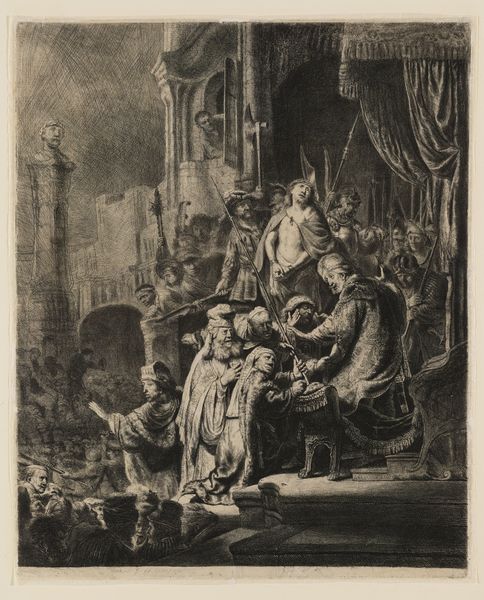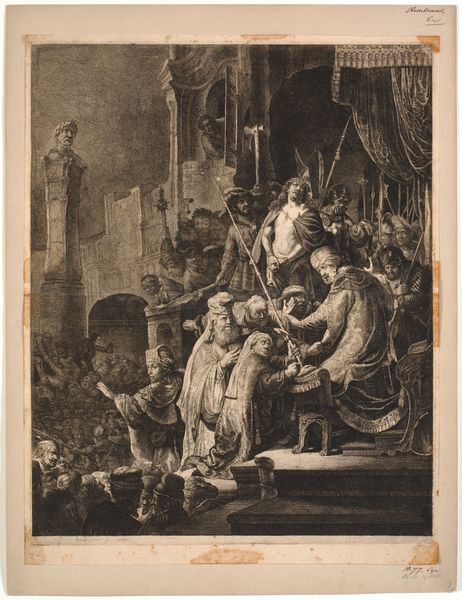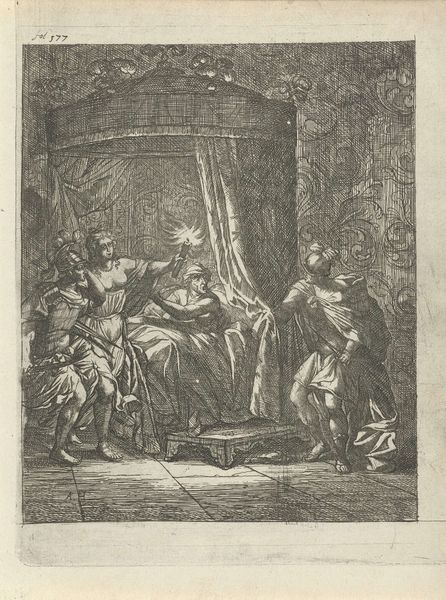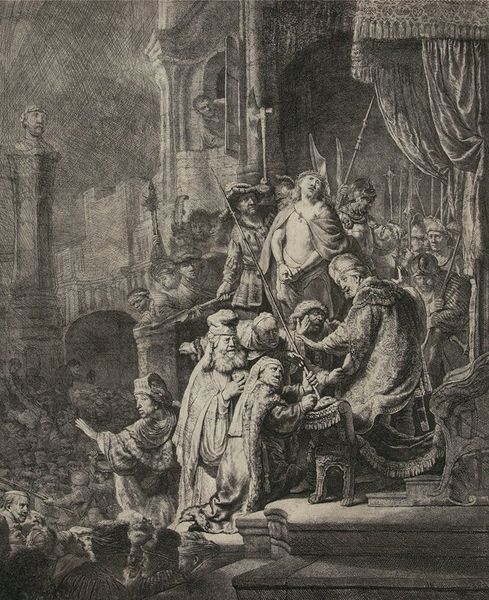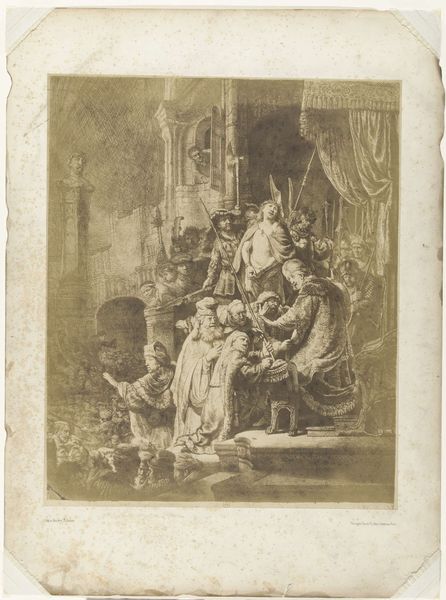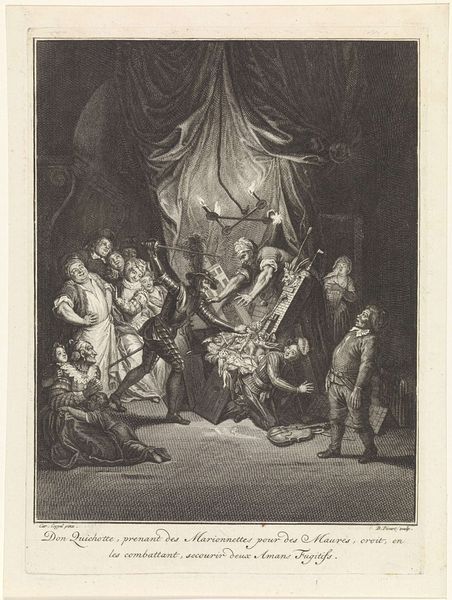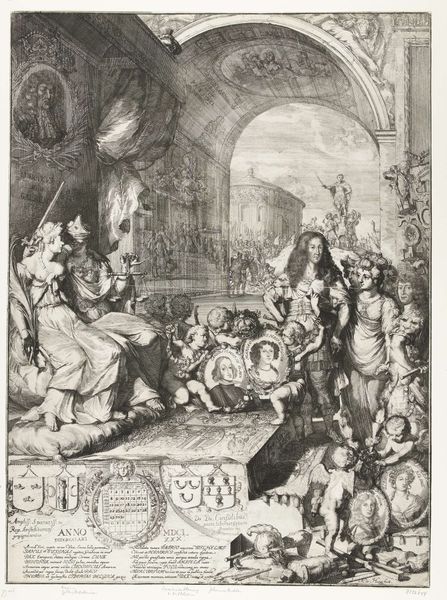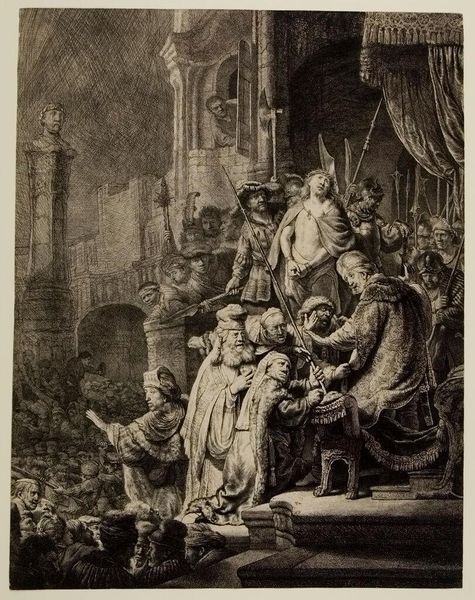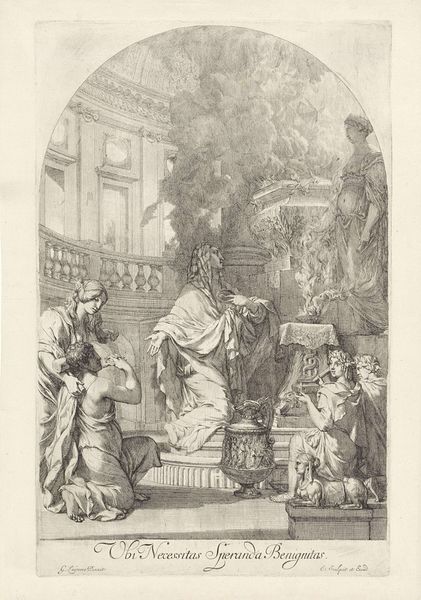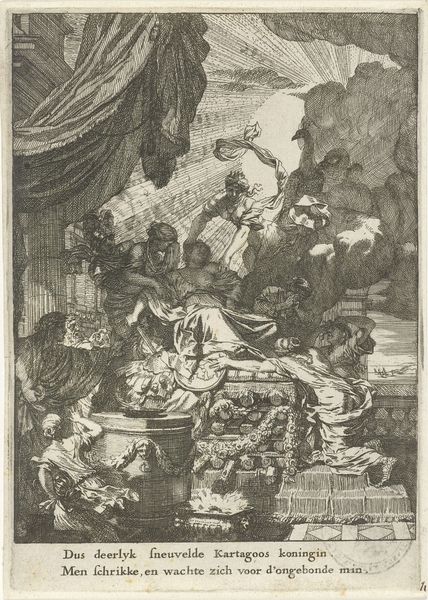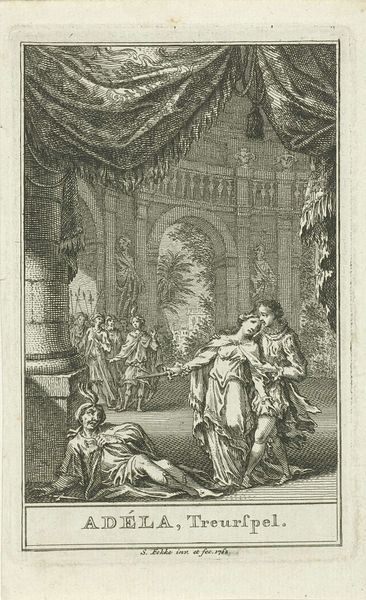
print, etching
#
narrative-art
#
baroque
# print
#
etching
#
figuration
#
history-painting
Dimensions: height 550 mm, width 448 mm
Copyright: Rijks Museum: Open Domain
Curator: Before us, we have Rembrandt van Rijn’s 1635 etching, "Christ before Pilate: large plate," currently housed in the Rijksmuseum. The print uses incredibly fine lines to depict a tense biblical scene. Editor: My first reaction is just how effectively the artist uses contrast to highlight emotional intensity. The darkness around Christ isolates him, amplifying the feeling of injustice. Curator: Precisely. Consider how Rembrandt orchestrates light and shadow to create such a visceral atmosphere. He’s manipulating the tonal range achievable with etching, pushing it almost to its limit to give the image a heightened dramatic sense. See how his sophisticated treatment of light creates depth and draws our eyes to different details of the composition, from Christ to the gesturing figures around Pilate. Editor: Looking at the symbolism, it seems so direct. Pilate washes his hands, symbolically cleansing himself of responsibility. What else might be layered into this? Curator: The architectural backdrop. Its ruined grandeur provides the stage for what unfolds in front of it. The building’s dilapidation serves as an additional detail—all empires decline and fail. It is a detail layered into the visual experience of the work to give us the understanding that moral decisions affect the whole social body, not just the individual. Editor: What strikes me most is how even in this small print, the power of this moment remains emotionally overwhelming centuries after it was created. It speaks to something universal about truth, justice, and human fallibility. Curator: Agreed. I would emphasize also, however, the compositional structure which funnels our attention and dictates how we feel: The strategic use of chiaroscuro makes that feeling not only profound but impossible to ignore. Editor: Yes, each level reveals new information. So while the scene shows moral bankruptcy in real time, Rembrandt’s technical skill amplifies its significance over centuries.
Comments
No comments
Be the first to comment and join the conversation on the ultimate creative platform.
